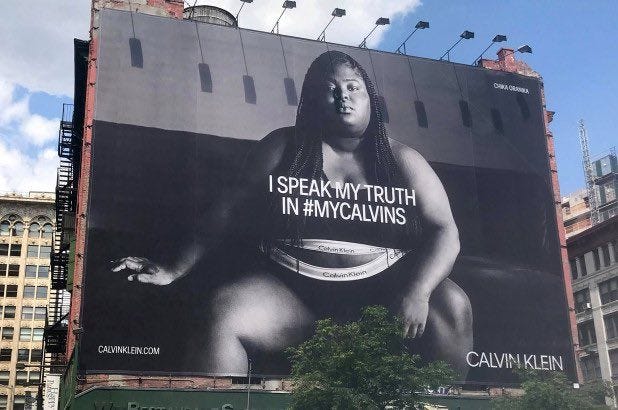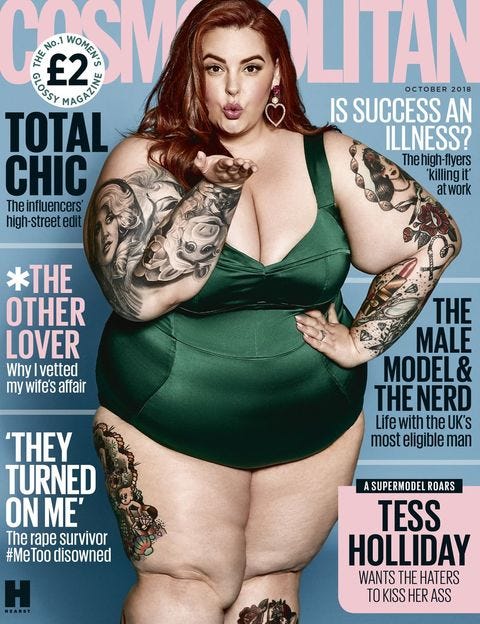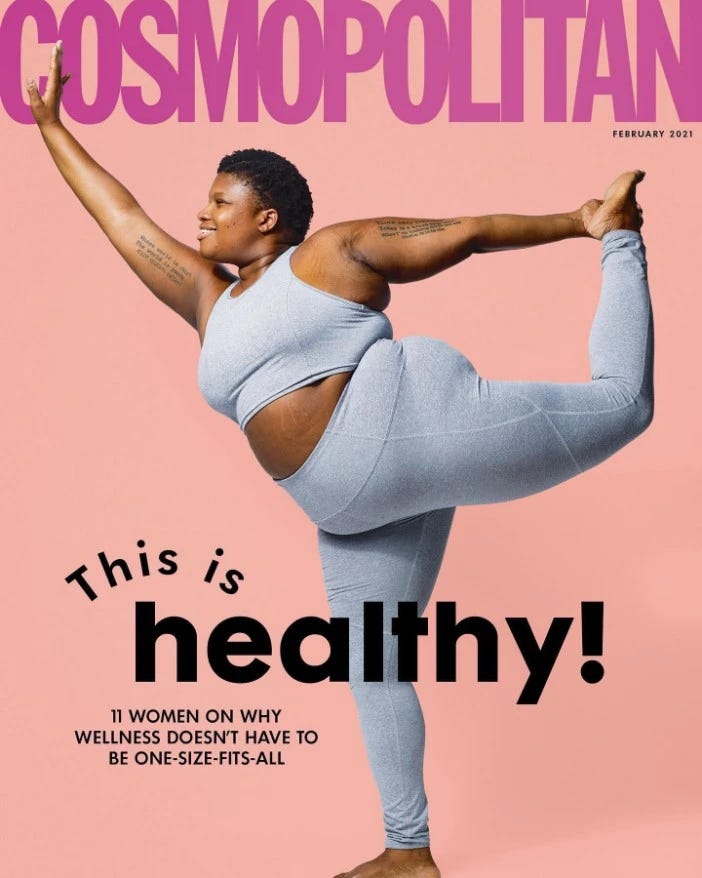n 2013, I published a short article
about generation loss. This happens when you copy something, then copy the copy over and over again. It can be anything. A YouTube video. A paper document. A gene. The process amplifies flaws inherent to the copying device, degrading the original. But my point was that it doesn’t just degrade. Generation loss brings the original into the uncanny valley. It becomes sinister, disturbing. The reason, I alleged, is because as the original fades, it’s replaced by the “voice” of the copying machine itself.
People talk about our “post-truth” world. What they mean is that the internet delivers the truth you want, so no one can agree on what is true. Coolness, I think, is headed in the same direction. Cool has experienced massive generation loss from being copied repeatedly from prior generations, and we’re entering a post cool world. No one can agree on what’s cool and what isn’t.
Deep Fried
You’ve probably seen generation loss around. The deep fried
aesthetic is in, and deep frying is a form of purposeful generation loss. Here are some examples from certified cool people on Instagram.
https://instagram.com/p/CIUDnsDjN9l
https://instagram.com/p/CGiNjY1l7m3
https://instagram.com/p/CUxiR76lSQ5
https://instagram.com/p/CDaUAcLDCfU
https://instagram.com/p/CZK_4PirdXV
https://instagram.com/p/CbyAcD6O1hO
Scarred from infinite reposting, deep fried memes are defined by compounded imperfections. Generation loss distorts the original, replacing it with the software’s flaws. In a way, deep fried images are pictures of computers just as much as they’re pictures on computers—which is one reason they’re striking, disturbing, and irresistible.
But the main reason people like deep fried is because it looks cool. And it looks cool because chaos is cool. We can agree that beats, hippies, punks, gangster rappers were cool, and each a loss-of-control nightmare from the collective consciousness of the ordered society from which they arose. Like these movements, deep frying reflects the chaotic opposite of the expected digital order.
The Coolness Equation
Besides chaos, American coolness is rooted in two things: beauty and purpose. For women, it was cool to throw off the shackles of the dress and put on pants…as long as you were hot. Then it was cool to cut off your hair…as long as you were hot. Then boots, roots, septum piercings all the way up to blue hair and face tattoos…as long as you’re hot.
The purpose element of this particular trend line has long been female empowerment. I cut my hair off because the patriarchy wants me to have long hair. And look, I’m still hot. Isn’t that cool?

Coolness follows the general formula chaos + beauty + purpose pretty closely. But, like drugs, the coolness addict (and culture is nothing if not a coolness addict) needs to go further and further to feel the buzz. Beats with face tattoos wouldn’t have been cool, no matter how beautiful and purposeful Jack Kerouac may have been at the time.
Post cool is what happens when the chaos is so strong that it threatens to destroy the other two elements of the equation. And here is where we start to act not against order, but against God and nature. Here is where generation loss begins to show us the mechanistic banality behind coolness. The coolness curve inverts, and culture starts working against itself.
Element 1: Chaos
At around Kesha, we thought the pendulum had to swing in the other direction. We couldn’t possibly sink deeper into messy chaos without going full Derelicte which, we thought, couldn’t happen. Coolness simply had to begin its approach back to square.
This notion had a name, which was Normcore. I was a strong believer in it, and I wrote an article
about that too. The idea was that cool had gone too far into chaos, and that the only possible path was back towards order. Indeed, during Normcore some cool people started dressing like Ivy League dads. Gap went all in with Dress Normal, one of my all-time favorite ad campaigns.


But it didn’t work. We were wrong. Normcore failed, as did the Gap campaign, and our hedonistic vampire media was really happy about it
. It was wishful thinking. Millennials were just starting to feel our age, so we wanted to believe that culture had gone too far into nihilism, and that it would escape back to the warm comfort of bland conformity just in time to have kids.
But then Xxxtentacion beat open the doors to perception, and along came Lil Peep, Tekashi 6ix9ine, Machine Gun Kelly and the whole Xanax generation for whom the body is a mere vehicle for content consumption. They’re deep fried people.



The new generation represented a high watermark for depravity and nihilism, moving the 27 Club
down to the 21 Club with a heretofore unimaginable concoction of drugs and violence. But we shouldn’t be surprised, it was the the exact amount of chaos required for our coolness fix.
Element 2: Beauty
But, there is hope for those of us who still believe that conformity can catch on. As culture lets go of what little dignity it had, it’s having to undermine the beauty and purpose elements of coolness, hence “post cool.” And it is this mechanism, more than any other, that really will drive a return to order, whether it’s cool or not.

Calvin Klein has long been known for its transgressive, controversial ads. It yearns for the next chaotic, purposeful trend that can define cool. But there’s nowhere to go besides into inaesthetics—a violation of the “beauty” element.
Ultimately, the kids cannot and will not buy cool if it’s not also sexy, no matter how much it’s forced upon them. And you can’t be more chaotic without undermining beauty itself. Take Billie Eilish, who struggles
between chasing beauty standards, which Gen Z calls cheugy, and proudly rejecting them.


Element 3: Purpose
The purpose of the Beats was breaking free from a cloistered society. The purpose of gangster rap was giving a voice to the ignored. The purpose of Billie Eilish is…what exactly?
Some say it’s nihilism, but that’s not exactly right. It’s not that there is no purpose. I think you can characterize this generation of cool musicians, including Billie Eilish and even Xxxtentacion, as the Vulnerability Revolution. “I’m messed up and okay with talking about it,” they reiterate.
But the purpose of weakness is a weak purpose. Self Care isn’t very inspiring. Nobody really gives a s***t if you’re a messed up rich kid, or poor kid, or middle class kid. People in Sweden and Japan who had never imagined someone like Dr. Dre are all very familiar with insecure people. Celebrating the voice of the relatably f—ed up just isn’t a compelling movement. The socioeconomic foundation is missing.
To compensate, the cool kids are stuck parroting whatever cause is bubbling through social media. These tremors are often sponsored by global mega-corporations and, while effective, definitely aren’t cool. What they are is post cool.
https://twitter.com/elonmusk/status/1503276966874595330
Late Stage Nihilism
Cool actually can’t swing back towards order, we’ve gotten too addicted to chaos. And it also can’t fall deeper into chaos, because the depths required undermine the coolness equation. Besides that, mainstream global media will try hard to prevent things like “Dress Normal” from catching on. So coolness is left between a rock and a hard place. No one is really sure what it is. It’s certainly not the Grammys, but it’s not not the Grammys.
I imagine that inverted coolness curves occur towards the end of empires, when up becomes down, men become women, and our pets heads start falling off. Julius Caesar was both criticized and celebrated
as an effeminate hipster—Curio described him as “every woman’s man and every man’s woman.” The Roman Republic ended shortly after his reign. All I mean is, post cool is that moment when chaos and order get all mixed up, and coolness stops being a beautiful, purposeful reaction to the status quo. This can be disastrous, because coolness is a very important part of society. It gives the working class something to cling onto despite tough conditions. It’s a safety valve.
But for the moment, all we can do is enjoy the phase shift. Deep fried memes and deep fried rappers look the way they do because of generation loss. They’re a copy of a copy of a copy, and they bear the marks of the process, little remnants and flaws from every step of the way. Maybe the reason we like them isn’t just because they’re chaotic, but because they show us that we’ve reached the end of a long line. We enjoy the more honest picture, the image of the process that made them more than the images themselves.
